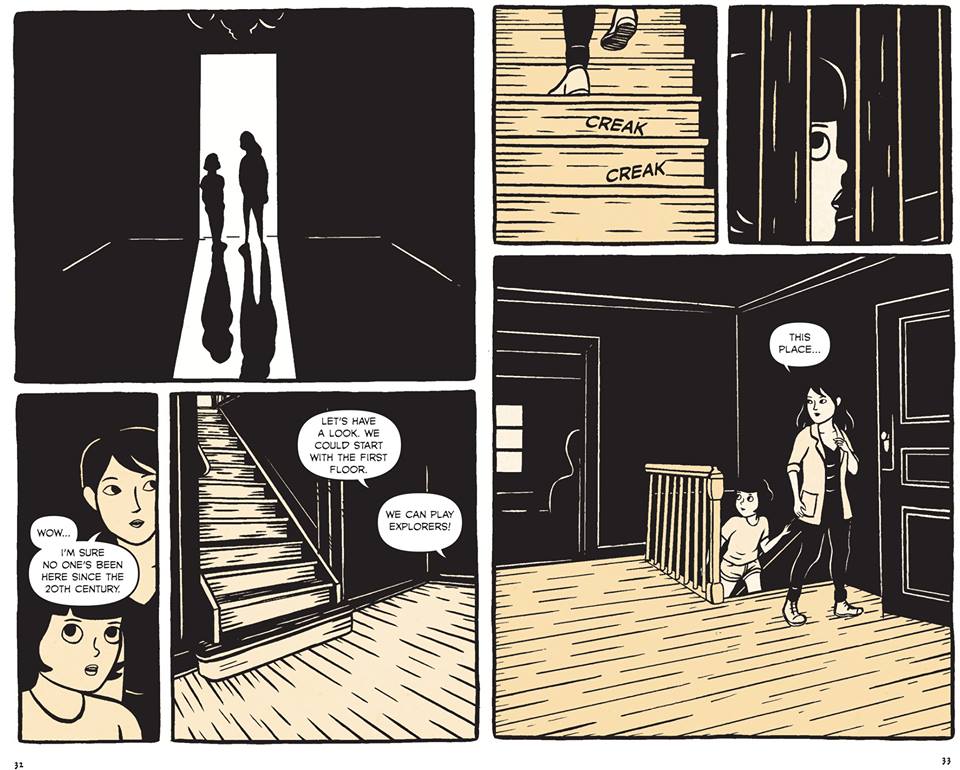 The clean lines and minimal storytelling of Kanarp and Edenborg’s graphic ghost story Hunger House glaze over a darker, unsettling story in the same way that the clean crisp surface of a glacier might conceal centuries old corpses, frozen forever in icy tombs. What on one level is basic outlines and simple dialogue, on another level is worming its way into your mind to pop up unannounced as the sun goes down.
The clean lines and minimal storytelling of Kanarp and Edenborg’s graphic ghost story Hunger House glaze over a darker, unsettling story in the same way that the clean crisp surface of a glacier might conceal centuries old corpses, frozen forever in icy tombs. What on one level is basic outlines and simple dialogue, on another level is worming its way into your mind to pop up unannounced as the sun goes down.
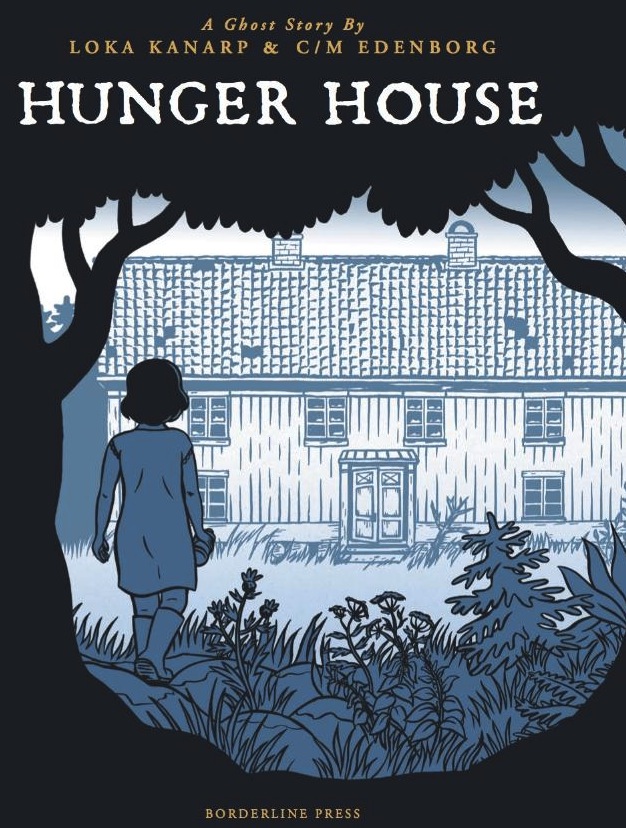 The story follows two girls – Elsa and her younger sister Fredrike – who have recently lost their mother in circumstances unexplained and have been placed with foster parents they are none to happy with, in a pastel suburban home complete with garden parties and freshly painted patios. And the haunted abandoned house in the woods. The girls’ new family seem more interested in using them as altruistic trophies rather than genuine children and Elsa in particular is not happy with the situation, urging her younger sister to flee a particularly banal garden party in favour of a crumbling, eerie house that everyone else is afraid to enter. However, once inside, rotten floorboards cause Elsa to plunge through into a well of darkness that appears to have no end or sides. What emerges looks and sounds like Elsa, but isn’t her at all. In fact, it may not even be human.
The story follows two girls – Elsa and her younger sister Fredrike – who have recently lost their mother in circumstances unexplained and have been placed with foster parents they are none to happy with, in a pastel suburban home complete with garden parties and freshly painted patios. And the haunted abandoned house in the woods. The girls’ new family seem more interested in using them as altruistic trophies rather than genuine children and Elsa in particular is not happy with the situation, urging her younger sister to flee a particularly banal garden party in favour of a crumbling, eerie house that everyone else is afraid to enter. However, once inside, rotten floorboards cause Elsa to plunge through into a well of darkness that appears to have no end or sides. What emerges looks and sounds like Elsa, but isn’t her at all. In fact, it may not even be human.
What’s truly stunning about this book (and will be mentioned over and over again in the course of this review) is how truly basic the artwork is. Plain lines, block monochromatic colours, even only very simple dialogue… it’s comics stripped right back into the simple lines of cartoons – expression and a whisper of exposition and the rest is left to the imagination. There’s nothing of the gory richness that horror has come to align itself with, rather an elegant framework for the story to drape itself insidiously across, slowly seeping into the gaps the way dark and dusky dampness seep into the frame of an old abandoned house that’s more than just an inanimate building.
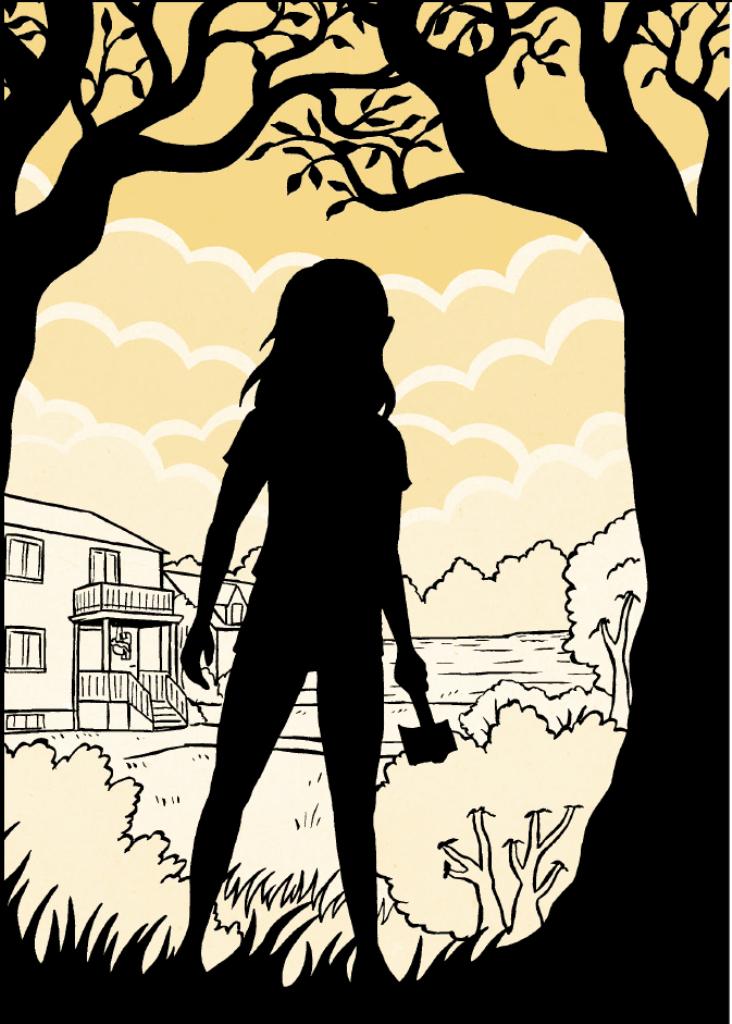
I’m not sure horror is the right genre to lump Hunger House in with. It has more of the atmospheric existentialism of the Swedish cinematic thrillers that have become so renowned. Except in a very, very simple graphic form. On the other hand… the haunted house, the young rebellious girls off exploring a dark forbidden wood – these are all the classic recognisable tropes of ghostly horror. Hunger House is a children’s ghost story that’s grown up and learned to question its own existence.
It’s hard to pinpoint what makes Hunger House as unsettling and spooky as it is. It’s not a particularly scary ghost story, at least in the visual sense. There are a few traditionally horror-style panels – like the full page image of Elsa standing silhouetted against black trees, axe in hand – but in general the story is plainly told and simply presented, making the growing unease hard to source and therefore all the more effective. Certainly, if it doesn’t take much to creep you out, I’d suggest stopping on the second to last page rather than reading the ominous foreboding final lines.
C/M Edenborg (W), Loka Kanarp (A) • Borderline Press, June 2014, £14.95





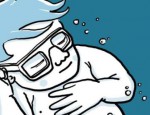
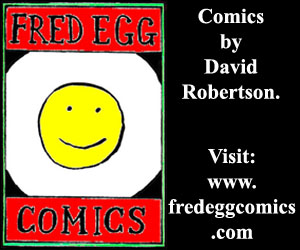


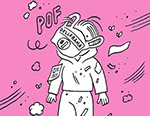
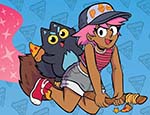
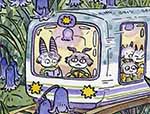
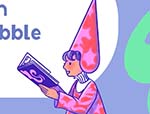
I’ll add this to my Halloween reading list I think…